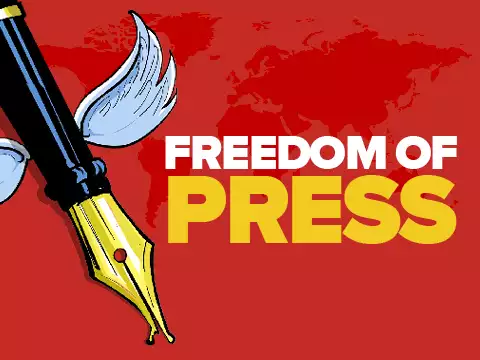Recently Delhi police has registered 3 FIRs, one against Journalist Saba Naqvi, suspended BJP spokesperson Nupur Sharma and expelled leader Naveen Jindal. They are accused of making controversial statements on social media which are detrimental to maintenance of public tranquility in the country. India is the world’s largest democracy where the fundamental right of freedom of expression under article 19 always stays under scrutiny. Recent FIRs registered against journalists and others are proof that any opinion can be considered a hate spreading message on social media. This is not the first incident before in the Bhima Koregaon case similarly many activists and journalists were kept on house arrest for expressing themselves.
Similarly, two journalists in India were arrested after they went to cover religiously motivated violence in the northeastern state in 2021. These cases have recently increased with the government also using the shutting down of the internet as a tool to stop the spread of hate messages, videos and spread of news on WhatsApp and other social media platforms. India has been constantly ranked low on the World Press Freedom index showing how Indian media is constantly curtailed from giving its voice on any platforms.
Who is the real culprit?
It is very correctly said that the media is the fourth pillar of democracy but how far does it stand to be true in India?. How far has this step of arresting journalists, activists has helped India in stopping hate among various religious groups? The truth is more than the journalists, activists or any other media groups this hate is politically
driven. Politicians have played a major role in ensuring that the religious groups act as vote banks for them. Before every Lok Sabha and legislative assembly elections, hate speeches are openly given by politicians all over India.
The long ongoing Ayodhya controversy, North east suffering under AFSPA and treatment of Muslim minority in various states are the real culprits. The way religious sentiments are used for political needs is the real reason for the spread of hate among various religions and castes.
Where does India stand in World?

India has fallen eight places from 142 to 150 in the 2022 World Press Freedom Index of 180 countries. The index published every year by Reporters without Borders, clearly shows an overall two-fold increase in media polarisation creating division within countries and between countries at the international level.
India’s ranking shows increased “violence against journalists” and a “politically partisan media” which has landed press freedom in a state of crisis in the world’s largest democracy.
The index says, media in India faces extreme pressure from increasingly authoritarian and nationalist governments. Incidents like the killing of 4 journalists in connection with their work every year (one killed since January 2022 and 13 currently in prison), India, according to the report, makes India one of the world’s most dangerous countries for media persons.
A joint statement by the Press Club of India, Press Association and the India Women’s Press corps, said attacks on the media grew in “myriad ways”.












